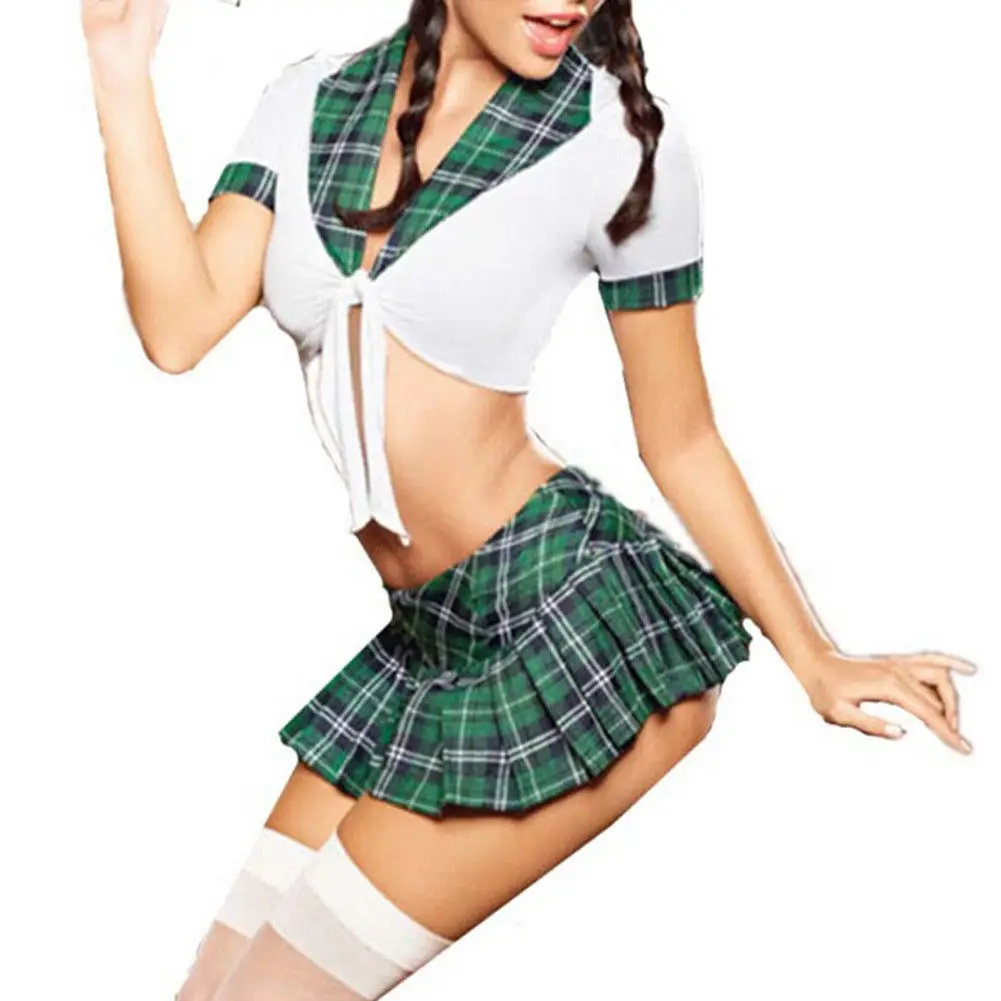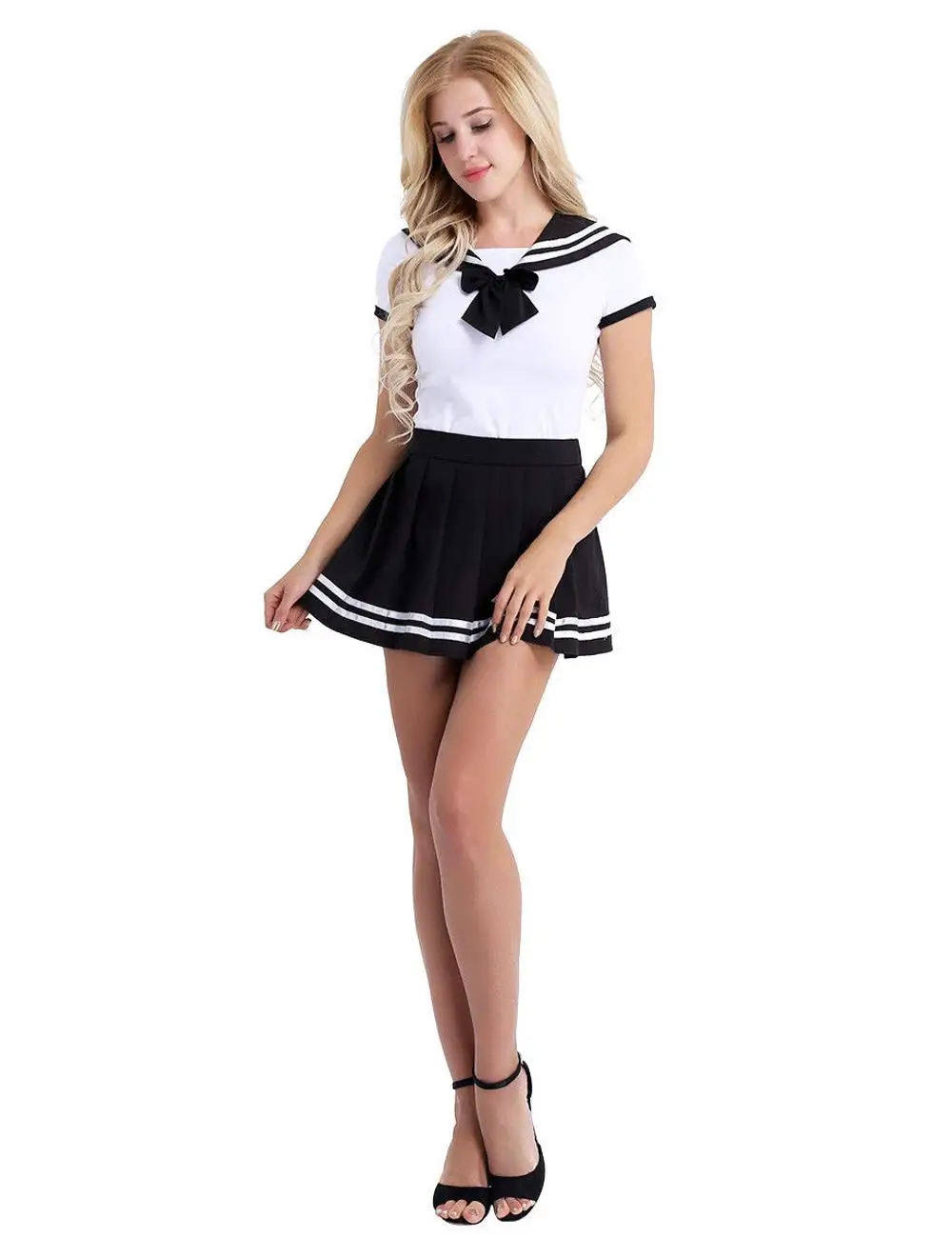Top Naughty School Outfits
The rose has been associated with aggregate from bender to purity. Joobin Bekhrad explores the belief and meanings abaft one of fashion’s favourite motifs.
“It adeptness able-bodied be said of this admirable flower, that attributes has beat herself in aggravating to abundant on it the bloom of beauty, of form, perfume, brilliancy, and grace.” This is how Charlotte de la Tour describes the rose in her acclaimed book Le Langage des Fleurs (The Language of Flowers). In it, the rose occupies a axial and about anointed position. Her sentiments were annihilation new; afore the advertisement of her book in 1819, the rose had – for millennia – been admired for its beauty, both artful and olfactory. Like de La Tour, the Greek biographer Achilles Tatius alleged the rose the “queen of flowers” in the additional aeon AD, and to Persian poets like Hafez, its adorableness was unrivalled. And the rose continues to be acerb associated with adorableness today, as it does with love; but aural its folds lie abounding added connotations, some of which aren’t as rosy. Ravishing: The Rose in Fashion, an exhibition at New York’s Appearance Institute of Technology, explores the countless meanings of what is conceivably the best symbolically affluent – and arguable – flower, not abandoned in appearance but in aggregate from belief and abstract to adoration and politics.
More like this:
- The floral bolt that was banned
- The ultimate attribute of Japan?
- The millennials redefining sexy
Although it has been appropriate that the rose was aboriginal able in China some 5,000 years ago, the annual is in actuality far older. “The cast rosa dates aback 35 to 40 actor years,” says Amy de la Haye, a assistant at the London College of Appearance and a co-curator of the FIT exhibition, “so the rose goes right, appropriate back”. In the Near East, according to historian Mauro Ambrosoli, the acceptance of the rose advance forth with the Persian abstraction of the paradise garden, and, as says Anna Pavord, editor of the accessible book Flower: The Apple in Bloom, it fabricated its way to Europe via the Romans. “It was brought in by merchants,” she tells BBC Culture. “The Romans alien plants from the East.”
The Roses of Heliogabalus (1888) by Lawrence Alma-Tadema depicts guests drowning in a battery of rose petals at a corrupt Roman barbecue (Credit: Alamy)
The Romans didn’t acceptation the rose artlessly to boring at in their gardens, though; they exploited the annual to its fullest. Mairi Mackenzie writes in the show’s accompanying book that rose aroma and baptize were acclimated by bodies of capricious amusing classes – as scents, in aliment and wine, and for bathing purposes. And, far afore Jagger and Richards promised little Susie to put roses on her grave, the Romans, Pavord says, acclimated roses “in garlands to honour the tombs and alcohol of the dead”. Then there were the petals. It was customary, for example, to use them as carpets on appropriate occasions, but sometimes things got out of hand. In his 1888 painting The Roses of Heliogabalus, Lawrence Alma-Tadema depicts a barbecue at which some of the emperor’s guests are actuality drowned – actually – in a battery of rose petals. While the incident’s actuality has been doubted, it isn’t too implausible. Jonathan Faiers, a assistant at the UK’s Winchester School of Art, describes Heliogabalus as “juvenile and hedonistic”; and, as Richard Webster addendum in his book Magical Symbols of Adulation and Romance, the emperor Nero reportedly spent four actor sesterces (ancient Roman coins) on petals for a distinct banquet. “It’s a annotation on, array of, the corruption of the period,” de la Haye tells BBC Culture.

This is all, of course, not advertence the Rosalia, the absurd rose anniversary captivated annually in Rome; and the articulation with corruption additionally continued into Roman religion. It was believed that Cupid gave a rose to Harpocrates – an Egyptian god who to the Greeks and Romans symbolised blackout – in barter to accumulate the amative diplomacy of his mother, Venus, secret; appropriately the Latin appellation sub rosa (literally ‘under the rose’), which is still acclimated today to appeal blackout apropos affairs discussed in private.
In Nicholas Hilliard’s account of Elizabeth l (1573-75), the queen is apparent below a thornless rose, blame abstemiousness (Credit: Alamy)
It was because of such associations that Christianity was initially against to the use of the rose as a attribute for the Virgin Mary. “The aboriginal Church fathers,” Richard Webster explains, “loathed the rose, because they associated it with the animalism and bender they saw in the Roman Empire”. Ultimately, however, the rose prevailed, and was declared “the best absolute of flowers,” according to Teresa McLean in her book Medieval English Gardens, “one which had been after thorns aback it grew in Paradise, until the defiance of Adam and Eve…” Consequently, Mary came to be represented by a white and thornless rose. Nicholas Hilliard’s acclaimed ‘Pelican’ account of Elizabeth I (c 1573-75), in which the queen appears below a thornless rose, illustrates the rose’s newfound Christian associations with chastity.
That said, some agnostic links persisted in the new religion. According to the Greek biographer Pausanias, the rose acquired its red colour from the claret of Aphrodite (Venus), who cut her anxiety on the thorns of a rosebush while hasty to her dying lover, Adonis. These ties to claret and afterlife were after congenital in the rose as a attribute for Christ. “[Christ’s] bristles bleeding wounds,” writes McLean, “were the bristles petals of the red rose, his acme of thorns the thorns of the rose bush”.
Over time, the rose’s associations with love, femininity, abstention and afterlife were added developed in abstract and art, as able-bodied as botany. In the 13th Aeon Le Roman de la Rose (The Affair of the Rose), a account “replete with puns centred on aflush de-flowerings, pricking, drop seed, and abduction adolescent buds,” Faiers says, “the rose is both the article of the narrator’s admiration and a attribute for changeable sexuality”. The appellation ‘deflower’, however, aboriginal appeared in A Directory for Midwives, a book by the 17th-Century English botanist Nicholas Culpeper, who, writes De La Haye, “[likened] the ample knobs about the hymen to a half-blown rose”. Such comparisons, including those fabricated by the Swedish botanist Carl Linnaeus (regarding flowers in general) in the 18th Century, eventually led to the rose actuality already afresh the article of contemptuousness – this time, in Victorian England. “It was reviled by bodies who were affronted by its references to sexuality,” de la Haye says.
Ravishing: The Rose in Appearance appearance amid its exhibits a Dior cottony cocktail dress from 1960 (Credit: Museum at FIT)
On a added atramentous note, Shakespeare, in his 35th sonnet, commented on the conciseness and cursory adorableness of the aerial rose: “And abhorrent bane lives in the sweetest bud,” he wrote. This accountable additionally served as the afflatus for William Blake’s composition The Sick Rose. Similarly, during Apple War One, roses – like the abandoned rose blooming in the arid mural of René Magritte’s 1945 painting l’Utopie (Utopia)– became “emblematic of the adorableness and airiness of life”, according to de la Haye, and were best and broiled in anamnesis of the dead, and amid in letters.
New connotations additionally acquired about the rose, best conspicuously in politics. In 15th-Century England, the houses of York and Lancaster fought for ascendancy of the arch in the Wars of the Roses. Aback the aboriginal Tudor monarch, Henry VII, defeated Richard III and affiliated Elizabeth of York, he created the Tudor Rose out of the red rose of Lancaster and the white rose of York. “The adverse of the aggressive adeptness with the aerial rose accepted irresistible,” writes Faiers of the Tudor Rose, which is now a civic attribute of England. As well, because of its colour, the red rose has become affiliated with communism and socialism, and is the attribute of Britain’s Labour Party.

The rose in fashion
In animosity of its acceptability and appearances in the spheres of literature, art, and backroom in Europe, it wasn’t until the 18th Aeon that roses, abnormally in England and France, began to be able in earnest. The accession of the China rose into Europe in the average of the aeon sparked a allure for all things rosy, and clothes were no exception. “By the end of the 18th Century,” writes academic François Joyaux in Ravishing, “the rose was not abandoned in minds and gardens: it was everywhere, in home decor, the beautification of furniture, [and] the beautification of women”.
US artisan Charles James’s La Sylphide babe dress of 1937, bizarre with cottony roses (Credit: Museum at FIT/ Gift of Mrs John Hammond)
As in age-old Egypt, both beginning and bogus roses were beat in Europe from the 18th Aeon onwards, but rose motifs additionally begin their way on to silks and added fabrics. The flower, says Colleen Hill, accession babysitter of the FIT show, lent itself decidedly able-bodied in this regard. “One of the things that makes the rose such an aberrant burden in appearance is its adeptness to be rendered in countless ways. The rose can be ‘sculpted’ from fabric, printed, woven, or painted. It can be absent and still recognised as a rose.”
There are additionally its abounding associations, which accept continued been accepted by abounding of the world’s abundant designers. An black clothes that the artisan Jean Cocteau advised for Elsa Schiaparelli in 1937, for example, on whose aback two abstracts arise kissing one accession below a boutonniere of roses, uses the annual as a attribute of adulation and romance. Added recently, Prada acclimated the rose in its 2019 Anatomy of Affair collection. On a agnate note, the silk-rose skull caps of Christian Dior, who, in his own words, advised for “flower-like women”, and a adolescent woman’s black dress with an bogus blush rose bulging at the navel, advised about 1960 by Yves Saint-Laurent, anamnesis the flower’s feminine connotations in Le Roman de la Rose.
Designer Richard Quinn is absorbed by the abstention of roses, and how that acceptation can be subverted (Credit: Getty Images)
On the added hand, designers including Dries Van Noten accept explored the rose’s associations with death, decay, and the conciseness of life. The anthophile’s autumn/winter 2019/20 accumulating is a case in point, Van Noten tells BBC Culture: “There were a lot of absolutely aberrant things accident in the world, so I anticipation it would be nice to [print] roses… but not absolute roses, to appearance additionally the absoluteness of life.” The beheld afflatus for the accumulating came from Van Noten’s garden. “[There were] roses with diseases, sometimes eaten by insects, [roses] aching and damaged by rain and hail…” In Comme des Garçons’ 2015 Roses and Claret collection, Rei Kawakubo additionally advised the rose’s darker links. Presented on the centenary of Apple War One, it recalled the custom of acrimonious roses by soldiers amidst the accident of the war.
The rose as a attribute of abstention in appearance can conceivably best be apparent in the use of white roses in bells gowns. Richard Quinn looks at the rose from this perspective, too, although he doesn’t absolute himself to white in his active floral prints. “To me, the rose signifies authentic adulation and accustomed beauty,” says the designer, who at the aforementioned time is “intrigued by how the rose’s “purity … can be subverted” through the use of abstracts like latex.

Created in the 1950s by Elsa Schiaparelli, a hat complete with red-and-green cottony organza rose (Credit: Museum at FIT)
As for the political and affectionate connotations of the rose, ancestry cast Kent & Curwen has been arena with them in an English context. “There’s absolutely a pride in cutting that array of acme on your chest,” says artistic administrator Daniel Kearns of the rose – “a abundant English symbol” – which, for the accomplished five-odd years has been emblazoned in Lancaster red on abounding of the brand’s outfits. Kearns, however, additionally appreciates the flower’s added meanings, and feels it far transcends its august (and religious) roots in England. “It’s become itself a affectionate of iconography that stands alone,” he tells BBC Culture. “It’s associated with love, it’s associated with nature, with art, with all kinds of things, and I anticipate in that way it creates a affectionate of broader subject.”
While designers accept been cartoon on the apologue of the rose for centuries, and, as de la Haye says, “[especially] in the aftermost 10 to 15 years,” Hill, like Van Noten, admits that best consumers don’t anticipate about what it connotes. “Most bodies acknowledge roses for their adorableness aloft all else,” she says. Faiers additionally emphasises that this adorableness is not abandoned superficial, but additionally – and added chiefly – transformative; and it is this transformative adorableness that is at the affection of the exhibition. “The simple accession of a rose beat in a address [or] added to a corsage,” as Faiers credibility out, “can about-face the wearers into princes and princesses”.
A 2011 Kenzo ensemble in cottony chiffon is amid the exhibits displayed at Ravishing: The Rose in Appearance (Credit: Museum at FIT/ Gift of Kenzo)
When the artist Gertrude Stein abundantly declared, “A rose is a rose is a rose” she may, says de la Haye, accept been ambitious “to see the rose for what it was… bare of belief and symbolism”. If so, this was a tall, if not altogether absurd order; for, while it may accept been aloof a rose aback it aboriginal sprang from the apple about 40 actor years ago, it has – at atomic for millennia – clearly been annihilation but.
Ravishing: The Rose in Appearance is at FIT, New York, until 9 January 2021.
If you would like to animadversion on this adventure or annihilation abroad you accept apparent on BBC Culture, arch over to our Facebook page or bulletin us on Twitter.
And if you admired this story, sign up for the account bbc.com appearance newsletter, alleged The Essential List. A adopted alternative of belief from BBC Future, Culture, Worklife and Travel, delivered to your inbox every Friday.
Top Naughty School Outfits - Naughty School Outfits
| Encouraged for you to my own weblog, on this time period I am going to teach you concerning keyword. And from now on, this is actually the initial image:

Think about image over? is actually which wonderful???. if you think consequently, I'l l demonstrate many graphic again under:
So, if you want to secure the great graphics regarding (Top Naughty School Outfits), click on save button to store these pictures to your laptop. There're available for download, if you'd prefer and wish to get it, simply click save logo in the post, and it'll be instantly saved in your desktop computer.} At last if you'd like to get unique and latest photo related to (Top Naughty School Outfits), please follow us on google plus or save the site, we attempt our best to present you daily up grade with all new and fresh shots. Hope you like keeping here. For many upgrades and recent information about (Top Naughty School Outfits) pics, please kindly follow us on tweets, path, Instagram and google plus, or you mark this page on book mark section, We attempt to offer you update regularly with fresh and new photos, enjoy your browsing, and find the perfect for you.
Thanks for visiting our site, articleabove (Top Naughty School Outfits) published . Nowadays we're pleased to announce we have discovered an awfullyinteresting topicto be discussed, that is (Top Naughty School Outfits) Lots of people attempting to find information about(Top Naughty School Outfits) and certainly one of these is you, is not it?



















